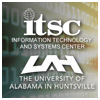Linked Environments for Atmospheric Discovery (LEAD): Architecture, Technology Roadmap and Deployment Strategy
| Title | Linked Environments for Atmospheric Discovery (LEAD): Architecture, Technology Roadmap and Deployment Strategy |
| Publication Type | Conference Proceedings |
| Year of Publication | 2005 |
| Authors | Droegemeier, KK, Chandrasekhar, A, Clark, R, Gannon, D, Graves, SJ, Joseph, E, Ramamurthy, M, Wilhelmson, R, Brewster, K, Domenico, B, Leyton, T, Morris, V, Murray, D, Plale, B, Ramachandran, R, Reed, D, Rushing, J, Weber, D, Wilson, A, Xue, M, Yalda, S |
| Conference Name | AMS Annual Meeting; 21st International Conference on Interactive Information Processing Systems (IIPS) for Meteorology, Oceanography, and Hydrology; 14th Symposium on Education |
| Date Published | Apr. 20 - 22, 20 |
| Conference Location | San Diego, CA |
| Keywords | LEAD |
| Abstract | A new National Science Foundation Large Information Technology Research (ITR) grant – known as Linked Environments for Atmospheric Discovery (LEAD) – has been funded to facilitate the identification, access, preparation, assimilation, prediction, management, analysis, mining, and visualization of a broad array of meteorological data and model output, independent of format and physical location. A transforming element of LEAD is dynamic workflow orchestration and data management, which will allow use of analysis tools, forecast models, and data repositories as dynamically adaptive, on-demand systems that can a) change configuration rapidly and automatically in response to weather; b) continually be steered by new data; c) respond to decision-driven inputs from users; d) initiate other processes automatically; and e) steer remote observing technologies to optimize data collection for the problem at hand.Having been in operation for slightly more than a year, LEAD has created a technology roadmap and architecture for developing its capabilities and placing them within the academic and research environment. Further, much of the LEAD infrastructure being developed for the WRF model, particularly workflow orchestration, will play a significant role in the nascent WRF Developmental Test Bed Center located at NCAR. This paper updates the status of LEAD (e.g., the topics noted above), its ties with other community activities (e.g., CONDUIT, THREDDS, MADIS, NOMADS), and the manner in which LEAD technologies will be made available for general use. Each component LEAD application is being created as a standards-based Web service that can be run in stand-alone configuration or chained together to build an end-to-end environment for on-demand, real time NWP. |
Involved Persons:
- Log in to post comments
- Google Scholar




